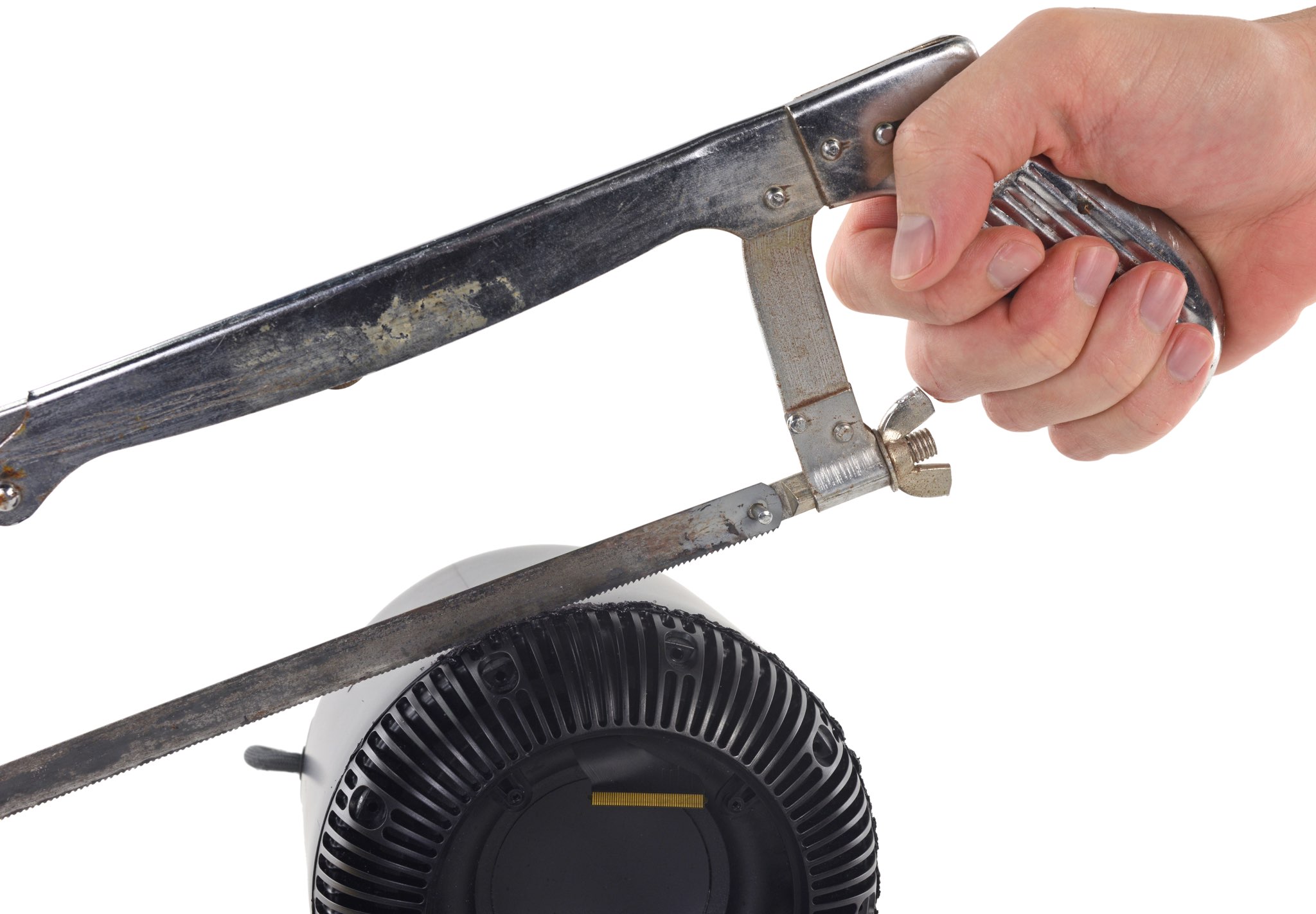
iFixit used knives and a hacksaw to pry open their HomePod so you don’t have to.
They found a number of advanced components and solutions inside, including sixteen gigabytes of Toshiba-supplied onboard flash storage, a 14-pin diagnostic port, a LED array that produces Siri graphics on a top-mounted touch interface and other notable highlights.
“HomePod is built like a tank,“ iFixit says, so durability should not be an issue.
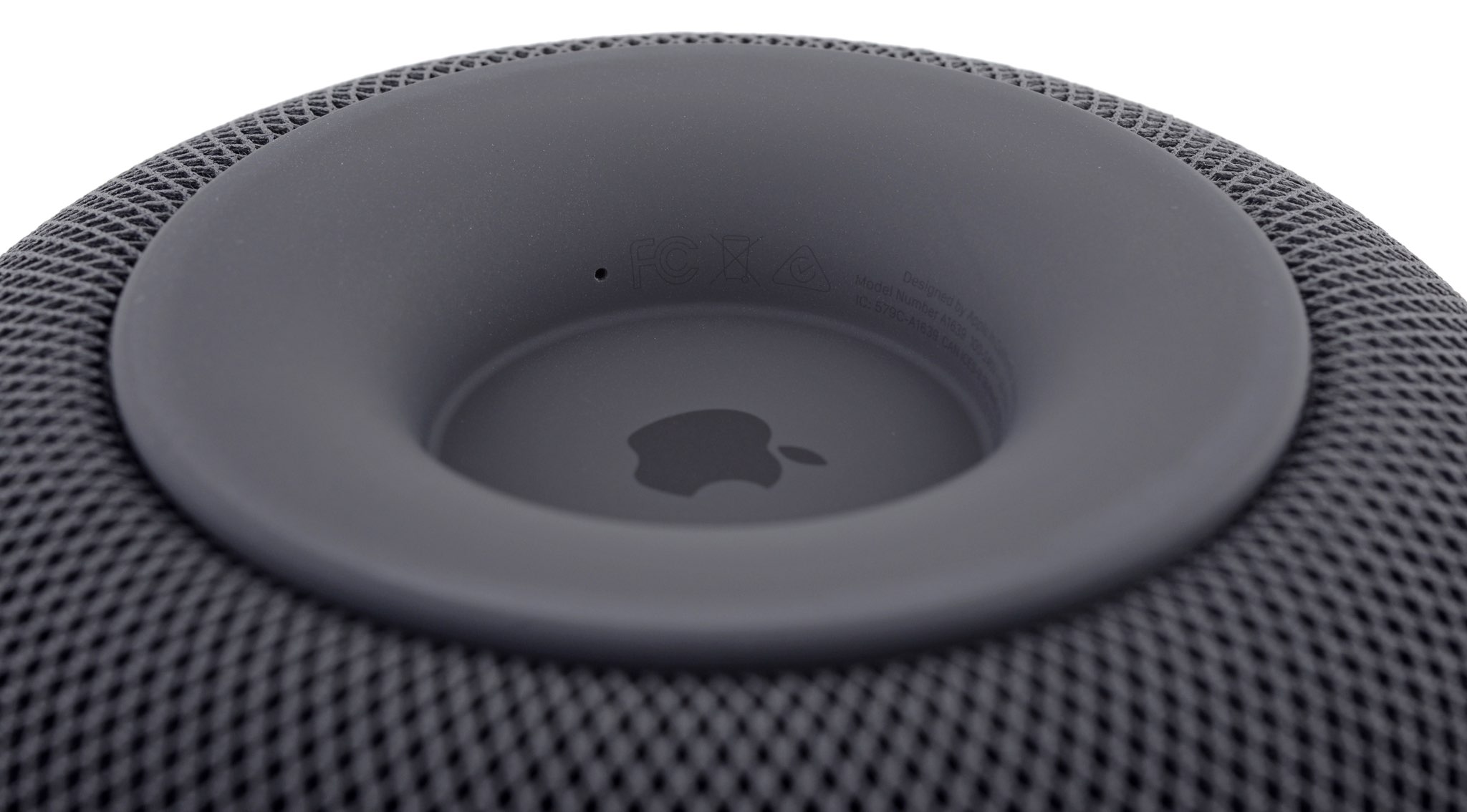
Apple’s crammed a 4-inch high-excursion, upward-firing woofer, a seven-tweeter array, a six-microphone beam-forming array (in two sets of three) driven by two Synaptics chips, plus low frequency microphone for real-time woofer calibration inside the cylindrically shaped housing.
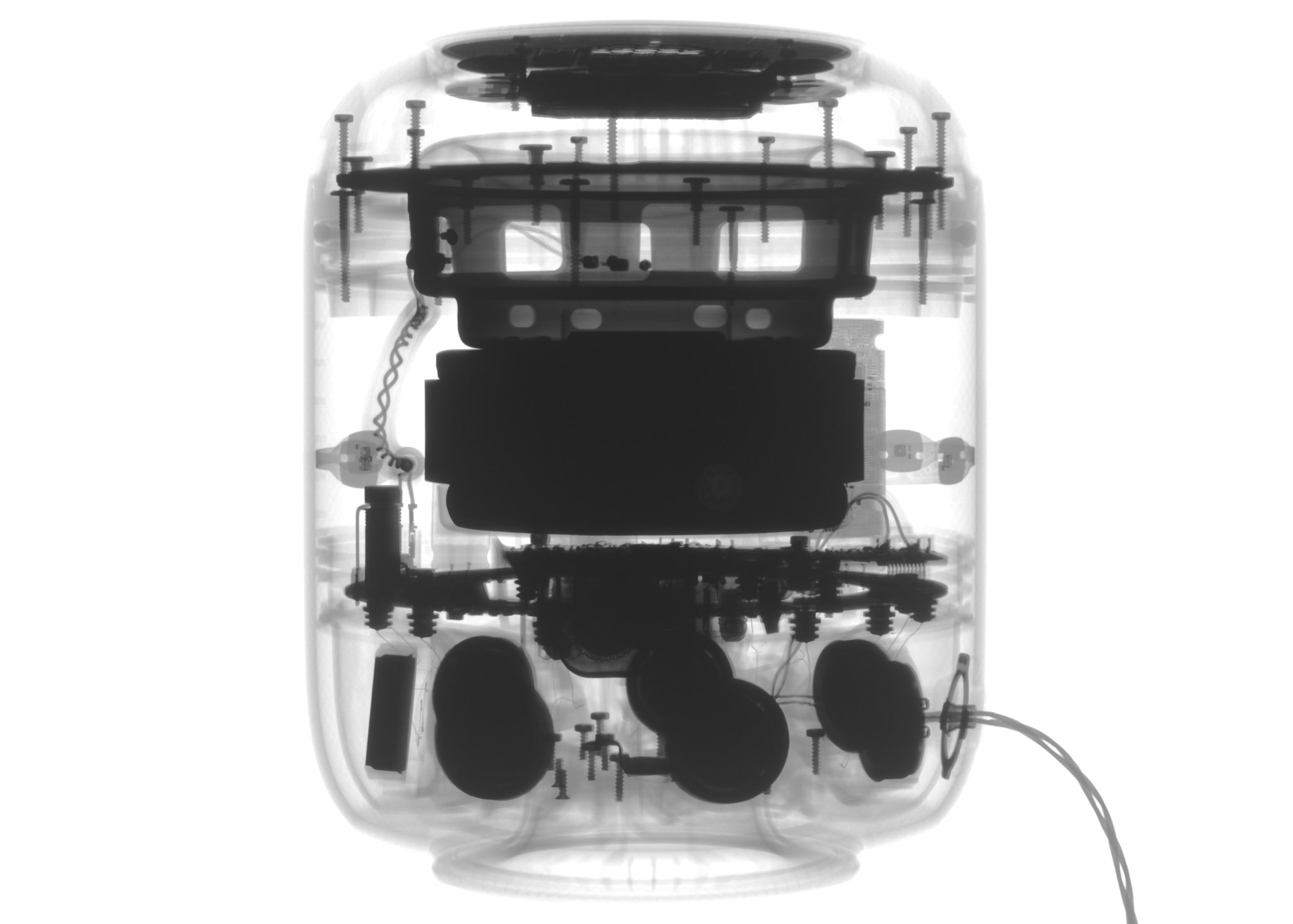
The tiny folded horn at the front of the tweeter is “a trick that audio design engineers use to increase a speaker’s efficiency and control the direction of its sound.” HomePod’s tweeters move back and forth several thousand times each second.
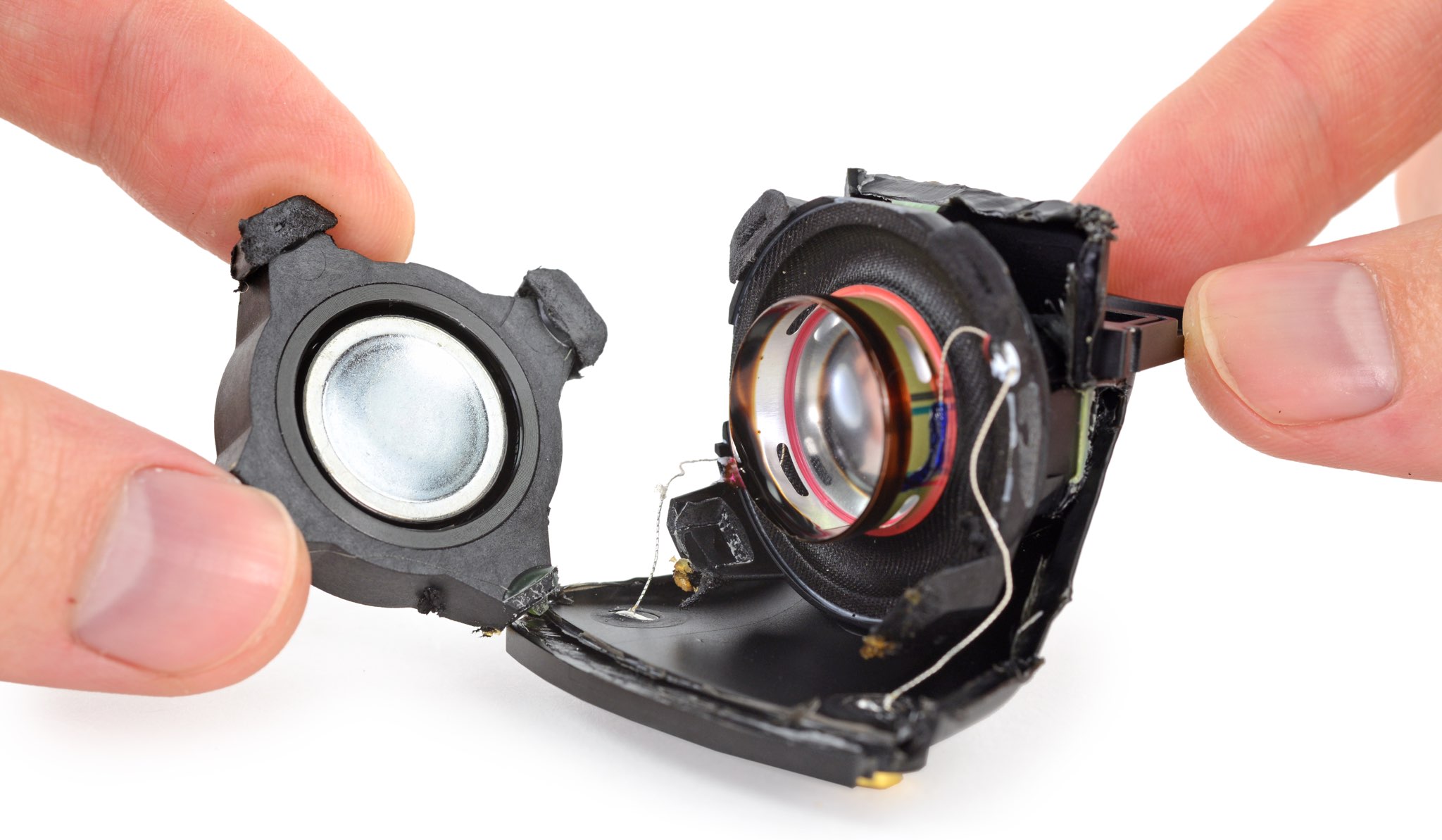
The vents on the sides of the voice coil bobbin and the four holes at the rear of the tweeter prevent air pressure from building up behind the tweeter dome as it moves.
A 14-pin port under the foot is “probably used to test or program HomePods on Pogo pins during assembly,” iFixit said. Apple’s thick, acoustically transparent 3D mesh and a secondary, internal fabric sleeve help protect the speaker’s insides from dust and debris.
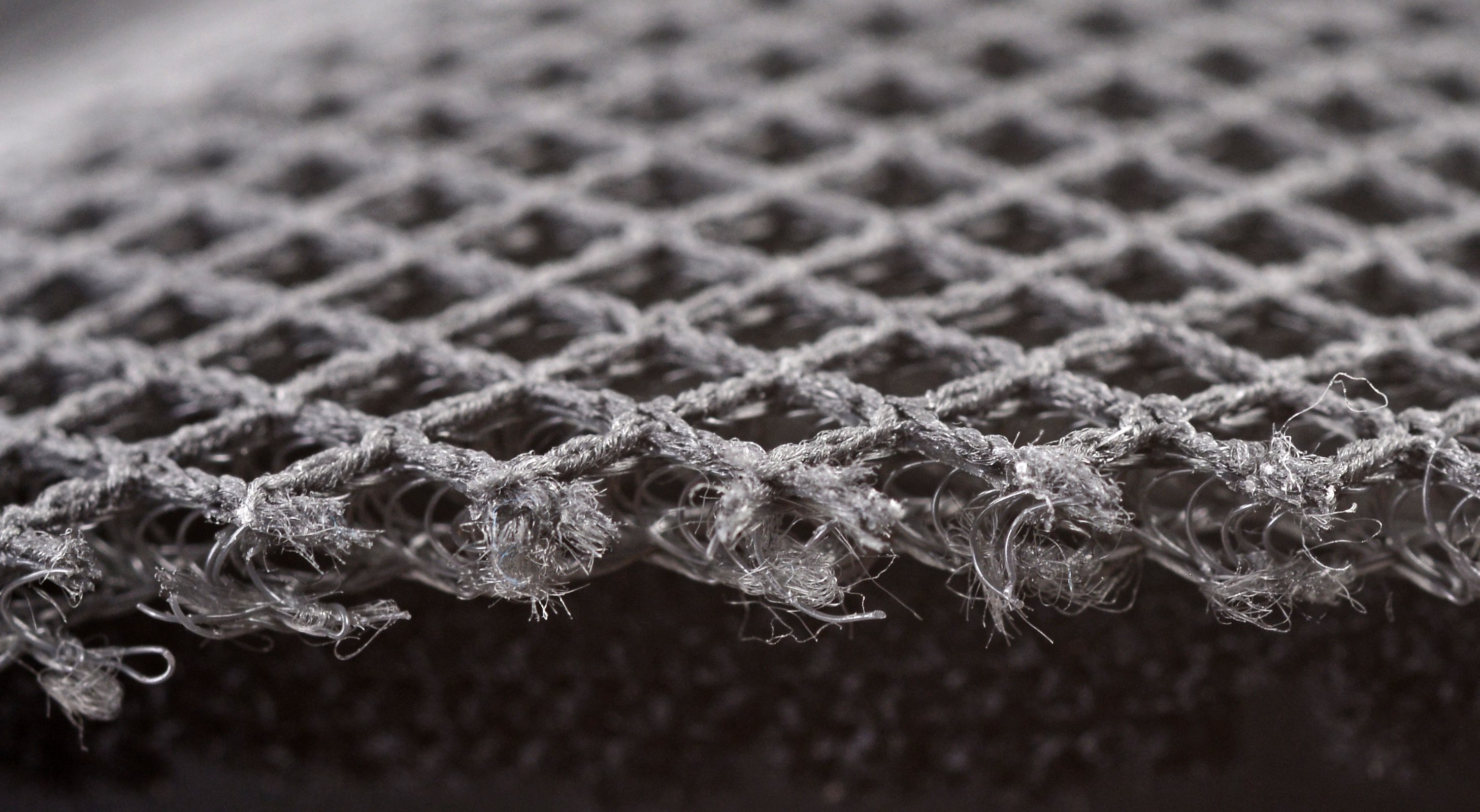
“This type of construction allows sound waves to travel through the fabric, with little to no reflection, while dust is kept out,” they noted. The outer fabric mesh lacks visible seams, but can be easily peeled off undamaged thanks to “a wicked cool drawstring.”
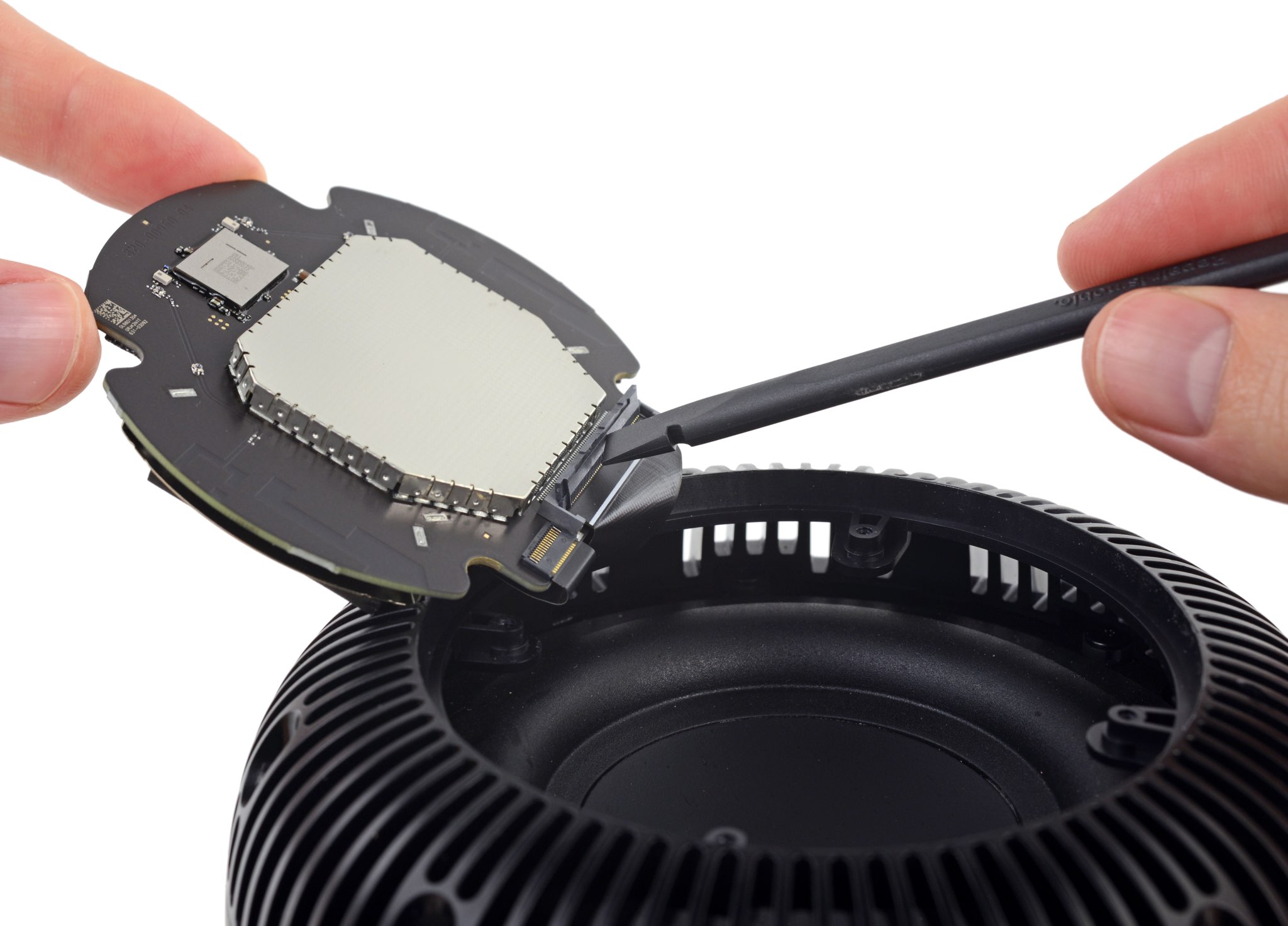
Siri graphics is produced by the LEDs and the diffuser that gives the indicator its cloudy look.
HomePod’s “display” at the top is not a regular bitmap screen like on your Mac. This means Apple won’t be able to add new icons or controls via a simple firmware update.
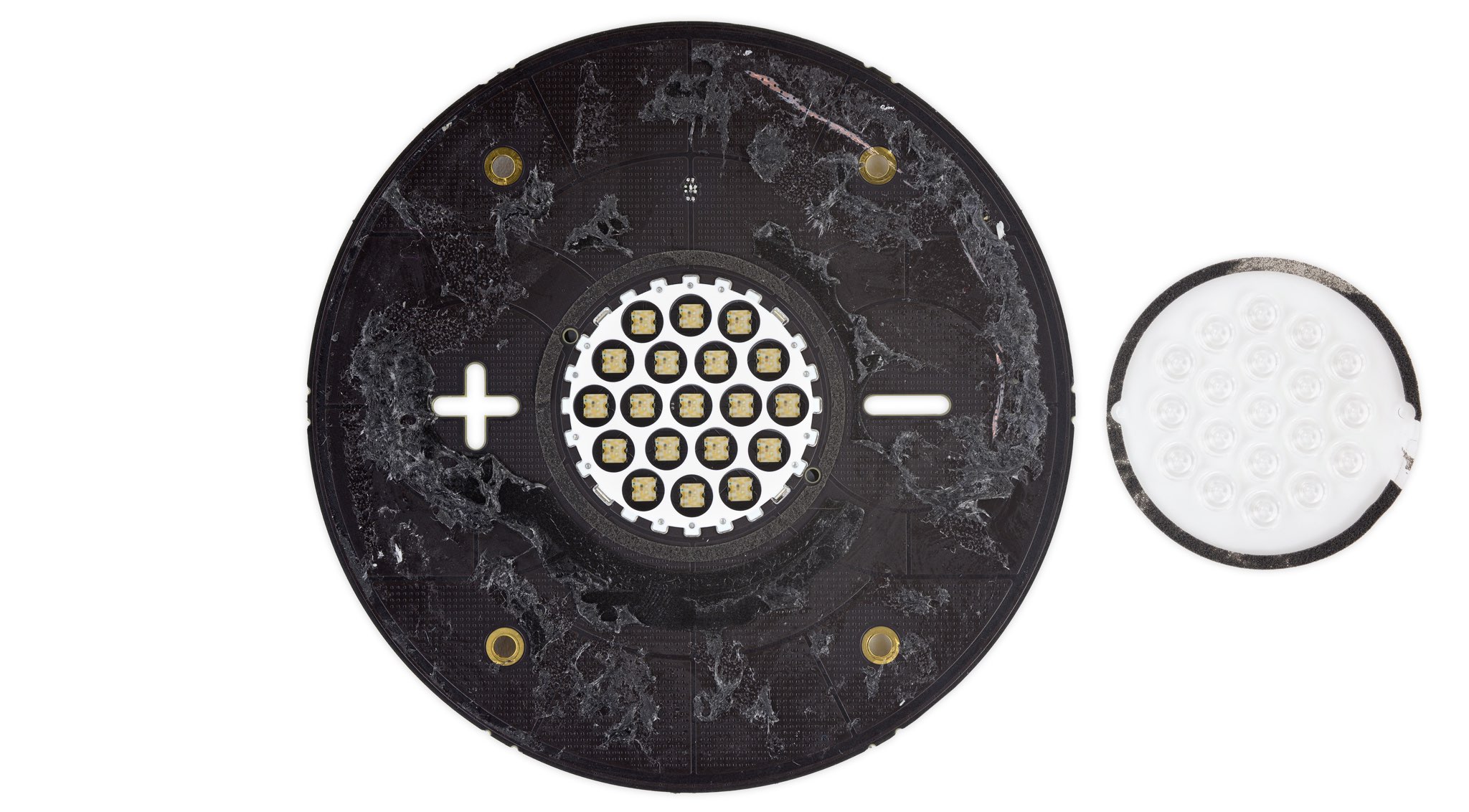 For example, the volume up and down symbols on the top are lit purely by the center array directed via guides nestled in notches on the logic board.
For example, the volume up and down symbols on the top are lit purely by the center array directed via guides nestled in notches on the logic board.
They especially focused on the woofer:
If the magnet on this woofer looks big for a speaker this size, that’s because it is. Deep, dramatic bass notes depend on a speaker’s ability to move lots of air.
While that’s traditionally done by increasing the cone’s diameter, Apple instead increased the travel of the voice coil, which in turn requires a bigger magnet. That way the speaker diameter stays small, but it can still move enough air to deliver quality bass notes.
The built-in Apple A8 chip handles HomePod’s fancy signal processing. It’s the same part used in the iPhone 6 series and likely paired with one gigabyte of RAM layered underneath.
HomePod has a newly minted model number A1639 and includes 802.11ac Wi-Fi networking with MIMO and Bluetooth 5.0 for proximity sensing (you cannot use your HomePod as a regular Bluetooth speaker). It comes with an integrated power supply and has a non-removable power cord with a cool braided cover for additional protection.
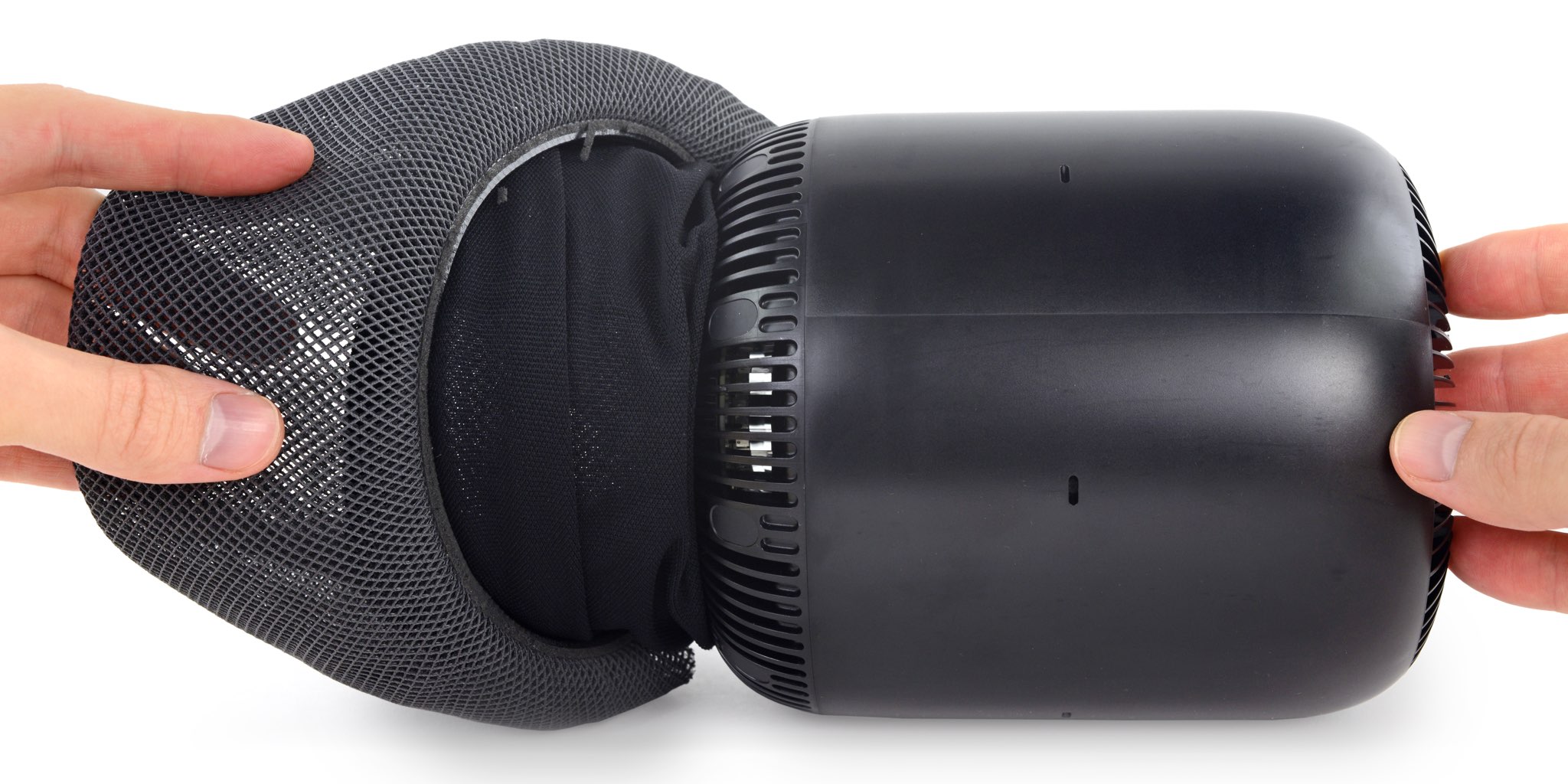
This thing is glued shut, with very strong adhesive securing the touch input cover, microphone array, rubber foot and the main point of entry on the top of the device. Because of that, iFixit gave HomePod a 1 out of 10 (ten is easiest to repair) on their repairability scale.

Small wonder Apple’s out-of-warranty repair price for HomePod is 80-85% of the device itself!
What are your thoughts on HomePod’s interior design and electronics?
Sound off with your observations in the comment section down below.